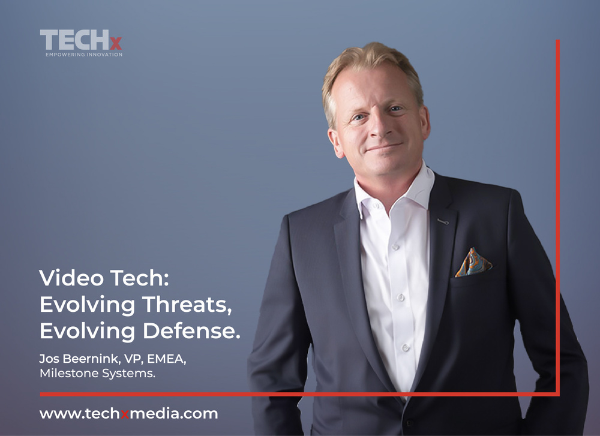
Jos Beernink, Vice President of EMEA at Milestone Systems
The integration of video technology has revolutionised numerous industries, from surveillance and security to entertainment and communication. However, as the adoption of video technology continues to accelerate, so do the associated cyber threats. As organisations increasingly rely on video technology to safeguard assets, enhance operations, and ensure safety, it becomes imperative to proactively anticipate and mitigate emerging risks.
The cybersecurity landscape within video technology is rapidly evolving, with new threats continually emerging. Understanding these threats and implementing effective mitigation strategies is essential to safeguarding sensitive data and maintaining operational integrity.
Deepfake technology, which uses artificial intelligence (AI) to create highly realistic but entirely fabricated videos, poses a significant threat to video authenticity and trustworthiness. The potential implications of deepfake videos are far-reaching, from political propaganda to corporate sabotage. Organisations must invest in advanced video authentication techniques and implement robust verification processes to detect and combat the spread of deepfake content.
The proliferation of Internet of Things (IoT) devices, including IP-network video cameras and smart surveillance systems, has introduced new avenues for cyber attackers to exploit. Vulnerabilities in IoT devices can be exploited to gain unauthorised access to networks, compromise sensitive data, and launch distributed denial-of-service (DDoS) attacks. To mitigate IoT-related risks, organisations should prioritise device security, regularly update firmware, and implement robust authentication mechanisms.
As video technology becomes increasingly ubiquitous, data privacy and surveillance concerns have come to the forefront. Unauthorised access to video feeds, improper data storage practices, and insufficient encryption measures can compromise individuals’ privacy rights and expose organisations to legal and reputational risks. Organisations must adhere to strict data protection regulations, implement encryption protocols, and adopt transparent data handling practices to address privacy concerns.
Integrating AI and machine learning algorithms in video analytics has enhanced the capabilities of video surveillance systems. However, cyber attackers can also exploit these same technologies to launch sophisticated AI-driven attacks. Adversarial attacks, in which malicious actors manipulate AI algorithms to generate false positives or evade detection, pose a significant threat to the integrity of video analytics. To defend against AI-driven attacks, organisations should deploy AI-powered security solutions capable of detecting and thwarting adversarial manipulations.
The interconnected nature of the video technology supply chain introduces inherent risks, including third-party vulnerabilities and supply chain attacks. Malicious actors may target suppliers, vendors, or service providers to infiltrate organisations’ networks and compromise video technology systems. To mitigate supply chain risks, organisations should conduct thorough risk assessments, vet suppliers’ security protocols, and establish contingency plans for supply chain disruptions.
Video technology’s rapid evolution has brought a host of emerging cyber threats that organisations must navigate effectively. By anticipating these threats and implementing proactive mitigation strategies, organisations can safeguard their video technology systems, protect sensitive data, and maintain operational continuity in an increasingly digital world. As technology advances, vigilance and adaptability will remain essential in the ongoing battle against cyber threats in video technology.